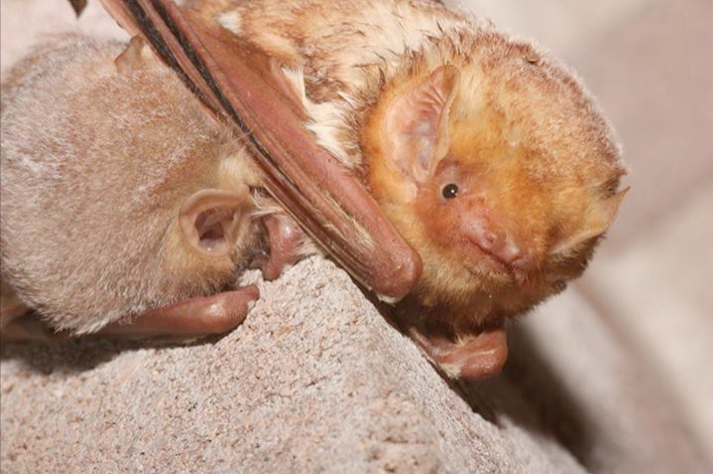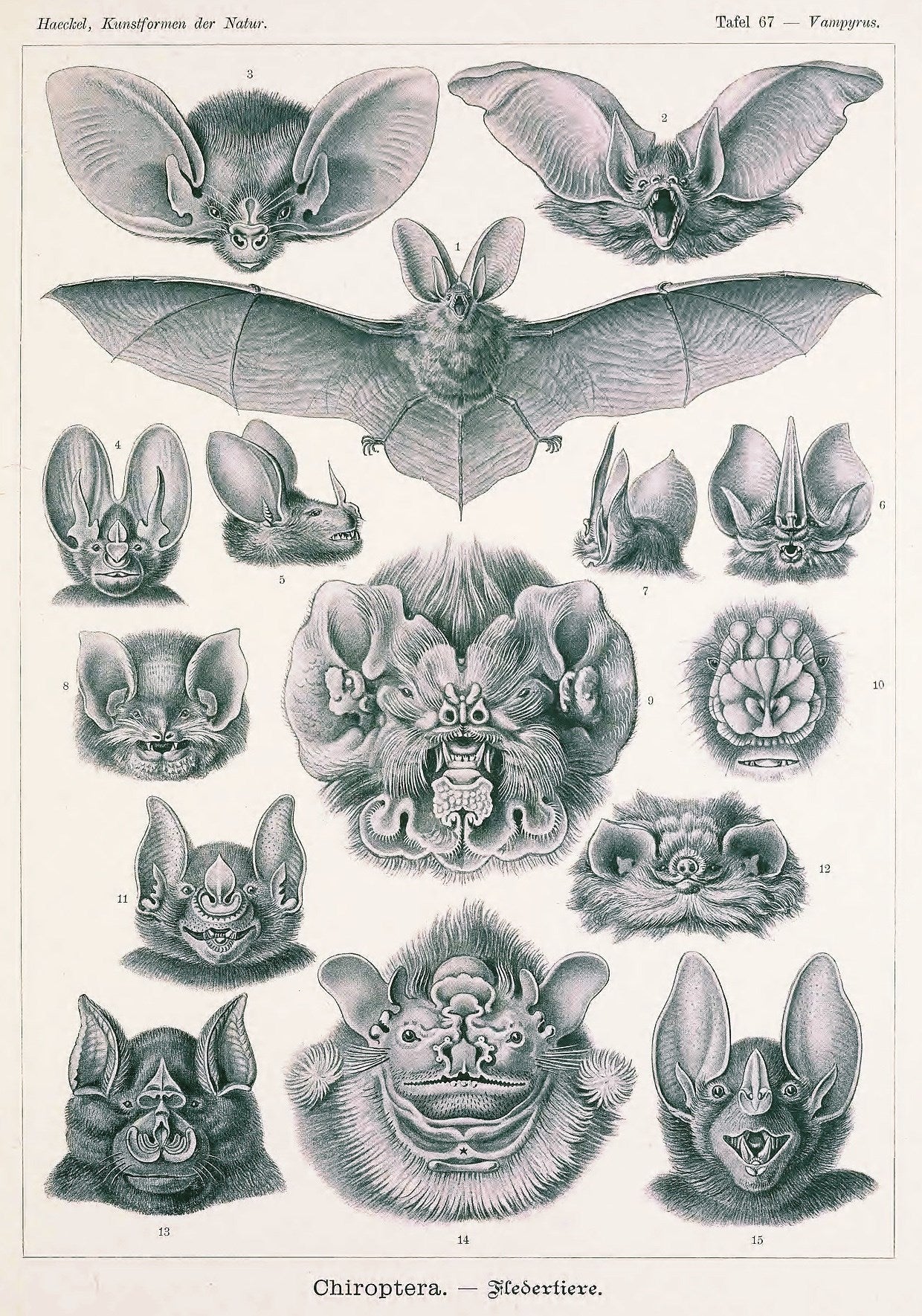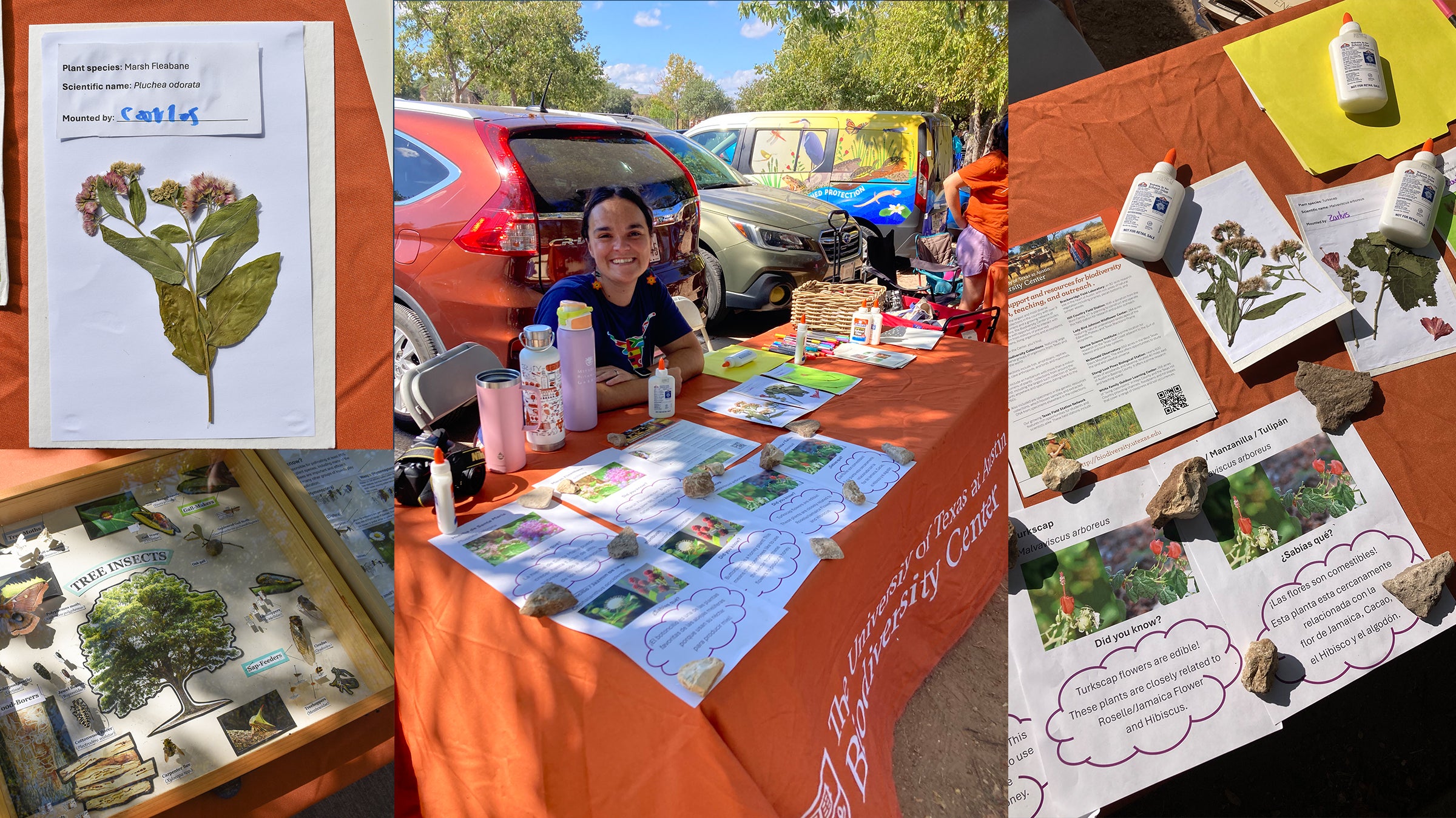
Mexican free-tailed bat (Photo: Tigga Kingston)
It’s October. The weather cools. People plan their Halloween costumes. Images of ghosts, vampires and other monsters start to fill our neighbors’ lawns or grocery store candy isles. Without a doubt, bats will be part of this montage, but do they deserve the association with scary things that go bump in the night?
October is Bat Appreciation Month, so in this installment of the Campus Biodiversity blog, we’ll look at why bats are fabulous.
Bats live just about everywhere on this planet except extremely cold environments. There are more than 1400 species of bats in the world. On campus, about 95% of the bats that appear are Mexican free-tailed bats (Tadarida brasiliensis) also known as Brazilian free-tailed bats. The second most common species is the Tricolored bat (Perimyotis subflavus), followed by the Northern Yellow (Lasiurus intermedius), Eastern Red (Lasiurus borealis), Evening bats (Nycticeius humeralis), and we’ve even had a rare surprise visit from a Hoary bat (Lasiurus cinereus).
Contrary to common belief, bats are not rodents. They are the largest order of mammals (Chiroptera) after rodents, and make up about 25% of all classified mammal species worldwide. They are the only mammal that can truly fly. In fact, the Mexican free-tailed bat is the fastest bat, achieving ground speed of up to 99 MPH!

Eastern red bat (Photo: Chris Drake)
The wing of a bat is actually an adapted forelimb. The flexible finger bones are elongated and between each is a thin membrane of skin. It’s similar to the skin that exists between our own fingers.
Bats have varied diets, depending on the species. In the tropics, some bats are frugivores, meaning they eat fruit. Some bats are insectivores, meaning they eat insects and can consume up to their weight in insects per night. A colony of bats can eat a ton of insects in one evening, and one millions bats can consume 700 tons in one year. This keeps insect populations like those of mosquitos under control. The dining habits of bats also help farmers’ crops from extensive damage by certain insect species like aphids. Some research has shown that in South Central Texas, free-tailed bats save farmers up to $1.7 million a year by eating agricultural pests, thus reducing the need for pesticides. Other bats eat nectar which means they are important pollinators. About 300 species of fruit depend on bats for pollination and/or seed dispersal. Some of these fruits you might actually have eaten today: bananas, avocados, figs, mangoes, and peaches. And yes, some bats do consume animal blood. These are the vampire bats of which so much lore is based upon, but of which there are only three species that live in Central and South America.
Contrary to myth, bats are not blind. Some see quite well actually, like the megabat species. But since most bats are nocturnal and do most of their feeding when it’s dark, they must rely on something else besides their sight. This is where echolocation comes in, and might be arguably one of the most fascinating aspects of bats.

Northern Yellow Bat (Photo: Austin Bat Refuge ©2019)
In a nutshell, echolocation is the use of sound waves and echoes to determine where objects are in space. So when a bat echolocates, it will create sound waves from either its mouth or nose. These sound waves travel until they hit an object, produce an echo that bounces from the object to return to the bat’s ears. The bat will listen to the echoes to figure out crucial details about the object, like its size and proximity.
Using echolocation, bats can detect things as thin as a human hair in darkness. This remarkable ability allows them to find tiny insects like mosquitos and eat them. However, there are some species of moths that have exploited this ability, and either produce ultrasound signals that serve as a warning, telling the bat they don’t taste good and should be avoided. The tiger moth, Bertholdia trigona, can actually produce signals that jam bat echolocation.
As cool as bats may be, they should still be admired from afar, like all wild animals. Bats can carry rabies, so if you encounter a bat, do not touch it. If you have made contact with a bat, it is important to seek medical care and to contact Environmental Health and Safety if on campus (512-471-3511) or the City of Austin Animal Services (311).
Sadly, bat populations of certain species have been declining due to white-nose syndrome, a fungal disease discovered in 2007 that effects species like the tricolored bat and other bats that hibernate during winter in caves. The disease causes high death rates and some scientists predict regional extinctions of certain bat species.
(Thank you to Dr. Loren Ammerman and Austin Bat Refuge for their assistance!)

Illustration by Ernst Haeckel from "Kunstformen der Natur" (1899-1904) depicting the faces of various bat species. (Via Biodiversity Heritage Library)
DID YOU KNOW
The largest urban colony of bats is right here in Austin! From March to November, around 1.5 million bats will appear at dusk from the Congress Avenue Bridge. The actual largest non-urban colony of bats in the world also lives in Texas, in Bracken Cave.
Bat waste is called “guano” and can be used as fertilizer.
If you have palm trees in your yard, you can provide roosting areas for bats by leaving the dead yellow fronds under the green crown of the tree.
When echolocating, microbats make calls in frequency between 14,000 to over 100,000 Hz. This extends well beyond the range of human hearing, 20 to 20,000 Hz.
Scientists developed sonar and radar navigation from studying bat echolocation.
In 1995, the Texas Legislature designated the Mexican free-tailed bat as the state mammal (flying).
SOURCES:
Dr. Loren Ammerman, Angelo State University
“Bats in Schools” Texas A&M Agrilife Extension (accessed online: https://agrilife.org/batsinschools/about-bats/)
Environmental Health & Safety, UT Austin (via Carin Peterson)
Nijhuis, Michelle, “What is Killing the Bats?” Smithsonian, August, 2011.
Tucker, Greg. “Bats,” Defenders of Wildlife (accessed online: https://defenders.org/wildlife/bats)
“What is Echolocation?” Arizona State University: Ask a Biologist (accessed online: https://askabiologist.asu.edu/echolocation)
“What is White-nose Syndrome?” National Park Service (accessed online: https://www.nps.gov/articles/what-is-white-nose-syndrome.htm)



